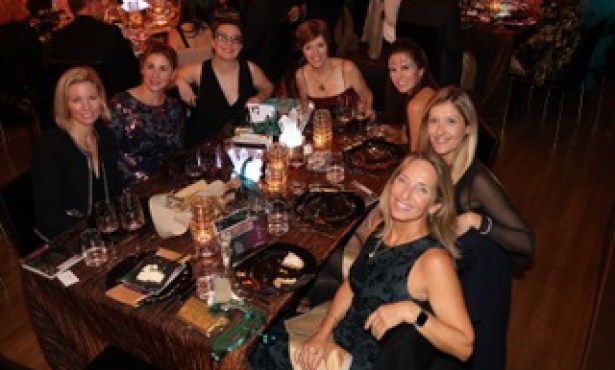Brownie Troop 50305 Gets A Lesson In Conservation
Peabody 2nd graders Explore World Conservation
When eleven 2nd grade girls gathered around Santa Barbara Zoo keeper, Lacy Byrnes, they were quietly looking towards gorilla bachelor troop residents, Goma and Kivu, the two male Silverback Gorillas munching on their afternoon treats, while relaxing in their habitat. As Byrnes spoke about these disappearing creatures, and their plight on the critically endangered list, the girls listened intently while gazing towards the great apes before them.
As part of learning about conservation, while also earning badges, Brownie Troop 50305 got a behind-the-scenes tour at the Santa Barbara Zoo (Santa Barbara Zoo) by gorilla keeper, Lacey Brynes. She explained the day-to-day life of the Santa Barbara Zoo’s two male silverback Gorilla’s, Goma and Kivu. While working in facts about the gorilla’s plight, Brynes also talked about a more elusive species: the Mountain Gorilla, found only in their natural habitat at Bwindi Impenetrable National Forest in Uganda and the Virunga Massif in Uganda, Rwanda and the Democratic Republic of Congo.
Their zoo visit is part of a bigger project in which the Brownies then learned more about the Mountain Gorilla, and how with only approximately 880 left in the wild, they face extinction.
With their new in depth look at the gorillas and the knowledge and information still fresh after the zoo visit, the girls had the opportunity to write to girls their own age who live near the more endangered Mountain Gorillas in Rwanda. Through Art of Conservation (AoC), the girls were able to ask girls their own age questions about living so close to such rare and raw beauty.
The exchange proved difficult in that no mail is reaching Rwanda at the moment. Julie Ghrist, the Founder of Art of Conservation, suggested that the Brownies email their questions, and then she would have the girls in Rwanda answer via the Art of Conservation blog.
The 7 and 8 year old girls questions were strait-forward:
“Why would someone want to hurt a mountain gorilla?” was the most commonly asked question. Followed by, “had any of the girls in Rwanda ever seen a Mountain Gorilla up close?”
They also wanted to know what it was like to live in a place that could top Santa Barbara in the exotic and extreme.
The correspondence between the girls is inspiring and recorded on their blogs found on AoC’s website: www.art-of-conservation.org. Art of Conservation runs education programs for children in rural communities bordering Rwanda’s Volcanoes National Park and allowed for the opportunity to open up conversation between two groups of diverse kids striving for the same goals. Art of Conservation is a U.S. based nonprofit organization operating in Rwanda that promotes conservation through educating and empowering communities. Art of Conservation provides innovative conservation and health education that directly affects the Critically Endangered mountain gorilla. AoC’s educational model encourages students to use creativity to build life skills and gain reverence for themselves, their community and the world. AoC also develops and supports local income-generating initiatives for adults that create sustainable growth.
The local, Santa Barbara Zoo (SBZoo.org), gave the Brownies a behind the scenes tour of the lowland gorillas and through their local programs and camps, had educated many of the girls in the Brownie Troop before in some capacity. They also partner with a company called Eco-Cell. The zoo collects old cell phones and sends them to Eco-Cell where they are refurbished and sold domestically and abroad. The money raised by the sale of these cell phones is used to fund the position of eco guards in the Democratic Republic of Congo. These employees patrol and monitor the habitat of the Western Lowland Gorillas, and are an integral part in reducing the amount of poaching in these areas.
Brownie Troop 30505 made friends, earned badges, but more importantly learned that there is a connection in this world from our own Channel Islands, to the forests of Rwanda, and they can be empowered to help change the dwindling number of 880 Mountain Gorillas (just as much as the children living there). For if not for our children, and their guardianship over Earth’s great treasures, these great animals, much like our whales, will go the way of extinction.


